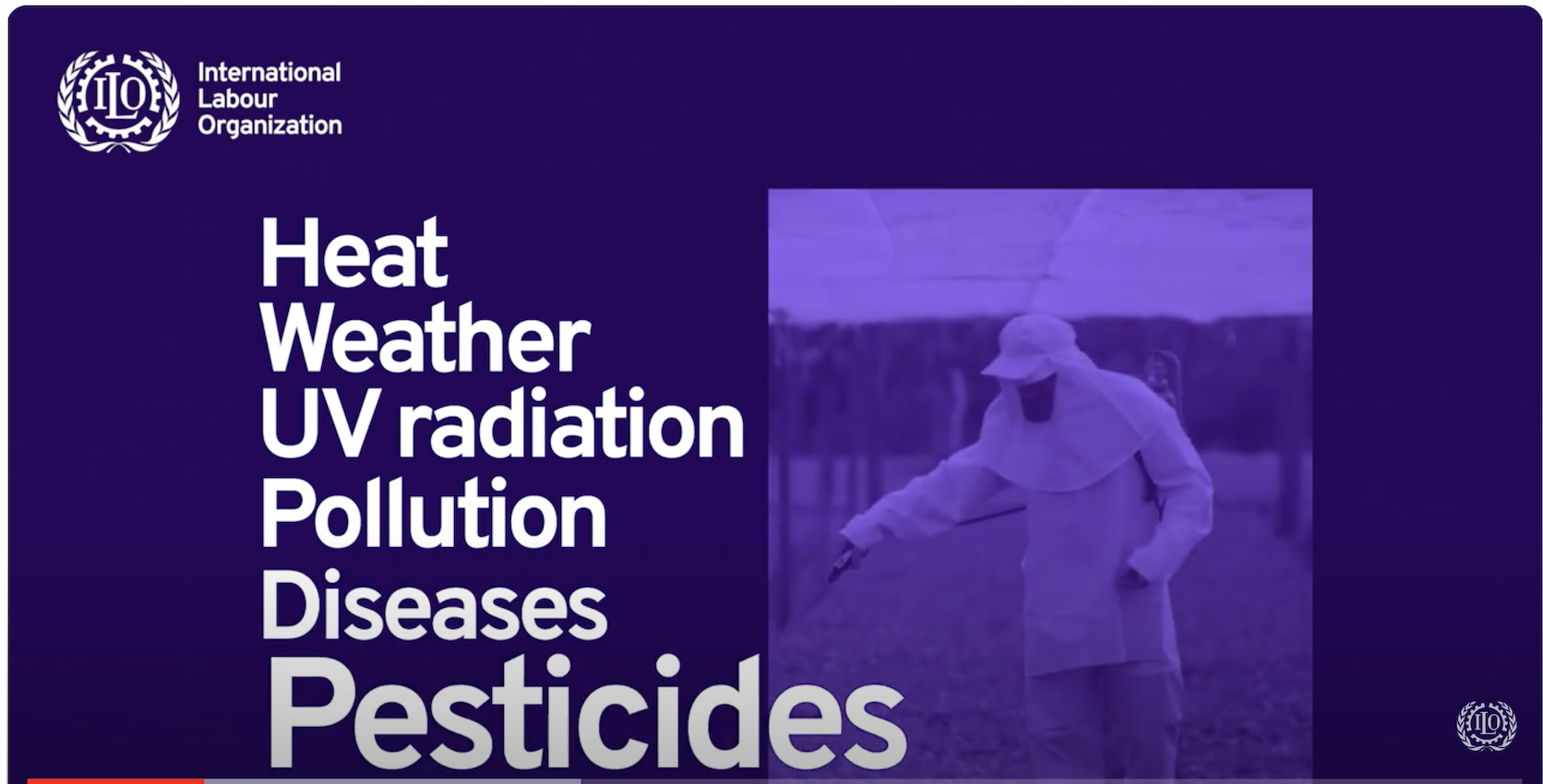
Climate Change Creates a ‘Cocktail’ of Serious Health Hazards for 70 Per Cent of the World’s Workers, ILO Report Finds
The health consequences of climate change can include cancer, cardiovascular disease, respiratory illnesses, kidney dysfunction and mental health conditions. ILO Press Release April 22, 2024.
GENEVA (ILO News) – A “staggering” number of workers, amounting to more than 70 per cent of the global workforce, are likely to be exposed to climate-change-related health hazards, and existing occupational safety and health (OSH) protections are struggling to keep up with the resulting risks, according to a new report by the International Labour Organization (ILO).
The report, Ensuring safety and health at work in a changing climate , says that climate change is already having a serious impact on the safety and health of workers in all regions of the world. The ILO estimates that more than 2.4 billion workers (out of a global workforce of 3.4 billion) are likely to be exposed to excessive heat at some point during their work, according to the most recent figures available (2020). When calculated as a share of the global workforce, the proportion has increased from 65.5 per cent to 70.9 per cent since 2000.
In addition, the report estimates that 18,970 lives and 2.09 million disability-adjusted life years are lost annually due to the 22.87 million occupational injuries, which are attributable to excessive heat. This is not to mention the 26.2 million people worldwide living with chronic kidney disease linked to workplace heat stress (2020 figures).
However, the impact of climate change on workers goes well beyond exposure to excessive heat, the report says, creating a “cocktail of hazards”, which result in a range of dangerous health conditions.
The report notes that numerous health conditions in workers have been linked to climate change, including cancer, cardiovascular disease, respiratory illnesses, kidney disfunction and mental health conditions. The impact includes:
- 1.6 billion workers exposed to UV radiation, with more than 18,960 work-related deaths annually from nonmelanoma skin cancer.
- 1.6 billion likely to be exposed to workplace air pollution, resulting in up to 860,000 work-related deaths among outdoor workers annually.
- Over 870 million workers in agriculture, likely to be exposed to pesticides, with more than 300,000 deaths attributed to pesticide poisoning annually.
- 15,000 work-related deaths every year due to exposure to parasitic and vector-borne diseases.
“It’s clear that climate change is already creating significant additional health hazards for workers,” said Manal Azzi, OSH Team Lead at the ILO. “It is essential that we heed these warnings. Occupational safety and health considerations must be become part of our climate change responses – both policies and actions. Working in safe and healthy environments is recognized as one of the ILO’s fundamental principles and rights at work. We must deliver on that commitment in relation to climate change, just as in every other aspect of work.”
The report also explores current country responses, including revising or creating new legislation, regulations and guidance, and improving climate mitigation strategies – such as energy efficiency measures – in working environments.


Leave a Reply